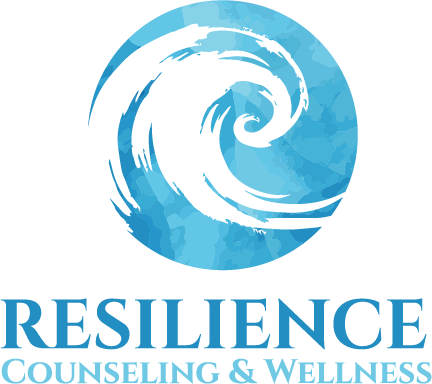Therapy doesn’t ask you to feel grateful. It asks you to feel everything, including the parts that still ache.

The Pressure to Be Thankful
November arrives with a familiar emotional current: gratitude. It’s in seasonal messages, dinner table rituals, social media captions, and well-meaning prompts like “What are you thankful for?”
But for many people, especially those navigating grief, burnout, transition, or emotional overwhelm, gratitude can feel complicated. Maybe you’re thankful and hurting. Maybe your blessings are real, but so is your fatigue. Maybe you want to be appreciative but can’t summon it right now.
That doesn’t mean you’re doing it wrong. It means you’re human.
Therapy invites us to explore gratitude not as a performance or prescription, but as a practice shaped by honesty. One that includes all parts of your emotional landscape, not just the tidy ones.
The Myth of “Gratitude as a Fix”
We’ve been taught that gratitude should soothe every ache. That it should cancel out sadness, rewrite hardship, and flip perspective with just a few reframed thoughts.
While appreciation can be powerful, it’s not an eraser. And using it as one often causes harm.
- “I shouldn’t complain. I have so much to be thankful for.”
- “Other people have it worse. I feel guilty for still struggling.”
- “I want to be grateful, but I just feel numb.”
These thoughts don’t reflect ingratitude. They reflect pressure, often internalized from messages that equate thankfulness with emotional success.
Therapy slows this down. It validates the weight beneath those words. It asks: Is this gratitude… or guilt in disguise?
What Counts as Gratitude?
Many people assume gratitude must be grand; specific, expressive, polished. But it doesn’t. In fact, the most restorative forms of appreciation are often quiet, incomplete, and felt rather than spoken.
Examples of tender gratitude:
- The body that still breathes, even when overwhelmed
- A pet’s familiar presence when words aren’t enough
- A therapist’s steady presence after a hard truth is named
- A single moment of spaciousness in a week that felt too full
These don’t require fanfare. They just require noticing.
Your gratitude doesn’t need to be shared, posted, or perfectly shaped to be valid. It just needs to feel real.
A Story from the Therapy Room
One client, moving through a year of layered grief, struggled with Thanksgiving. She said:
“Everyone keeps asking what I’m grateful for. I don’t know how to answer without making them uncomfortable.”
Together, we unpacked her emotional landscape. She wasn’t devoid of gratitude. She just didn’t feel ready to perform it. Her appreciation lived underneath the ache: the friend who texted “Thinking of you today,” the quiet hour spent walking alone, the food she could taste again after weeks of numbness.
She called it “invisible thankfulness.”
We named it. We honored it. And we let it stand alongside her grief without competing.
That’s the heart of this work.
Gratitude and Grief Can Coexist
You don’t have to be fully healed to feel grateful.
You don’t have to suppress sadness to appreciate what remains.
You don’t have to choose between longing and contentment.
Emotions don’t cancel each other out, they often live together.
Some of the most profound therapeutic moments emerge from this emotional coexistence:
- “I miss my old life, and I’m proud of who I’m becoming.”
- “I feel disconnected, and I’m thankful someone keeps reaching out.”
- “I still carry pain, and I’m grateful for the tools I’ve learned to hold it.”
If your gratitude feels bittersweet, that’s not failure. That’s truth.
Practices for Reclaiming Gratitude
Messy Gratitude Mapping
Create two columns:
- Left: “What feels heavy or unresolved”
- Right: “What still holds meaning or comfort”
Let yourself sit with both, without rushing to reframe. You’re honoring the full emotional picture, not just the parts others expect.
Breathwork for Integration
Gratitude can feel more accessible when the body feels safe.
Try this:
- Inhale: “I welcome presence.”
- Exhale: “I release pressure.”
Repeat for 2–3 minutes. Pair it with our 9D Breathwork group if you want to go deeper into somatic restoration.
Gratitude Story Collection
Instead of listing things you’re thankful for, reflect on moments that moved you this month, no matter how small.
- A deep breath before a hard conversation
- The softness of your blanket when you couldn’t sleep
- The courage it took to cancel a plan and rest
These stories become emotional anchors, not just affirmations.
What If You’re Not Ready for Gratitude?
That’s okay. Therapy isn’t a gratitude generator. It’s a space to feel what’s true. And sometimes, truth sounds more like:
- “I’m tired.”
- “I’m still holding anger.”
- “I want to be grateful, but I feel blocked.”
We meet that. We sit with it. We don’t force transformation; we hold space until it starts to emerge naturally.
You can enter therapy tearful, quiet, confused, or disconnected. You don’t need appreciation as your entry point. Just honesty.
Gratitude on Your Own Terms
As November unfolds, you might feel everything from warmth to resistance. Your emotions don’t need to match a seasonal theme. They need to reflect you.
Let your gratitude be:
| Private | Bittersweet |
| Small | Delayed |
| Silent | Surprising |
| Imperfect | Real |
Ready to Feel Without Pressure?
If you’re navigating layered emotions this season, grief, exhaustion, transition, or tender uncertainty, therapy can help you feel fully, not just festively.
Schedule a free 15-minute call with Frankie to find a therapist who meets you where you are.

